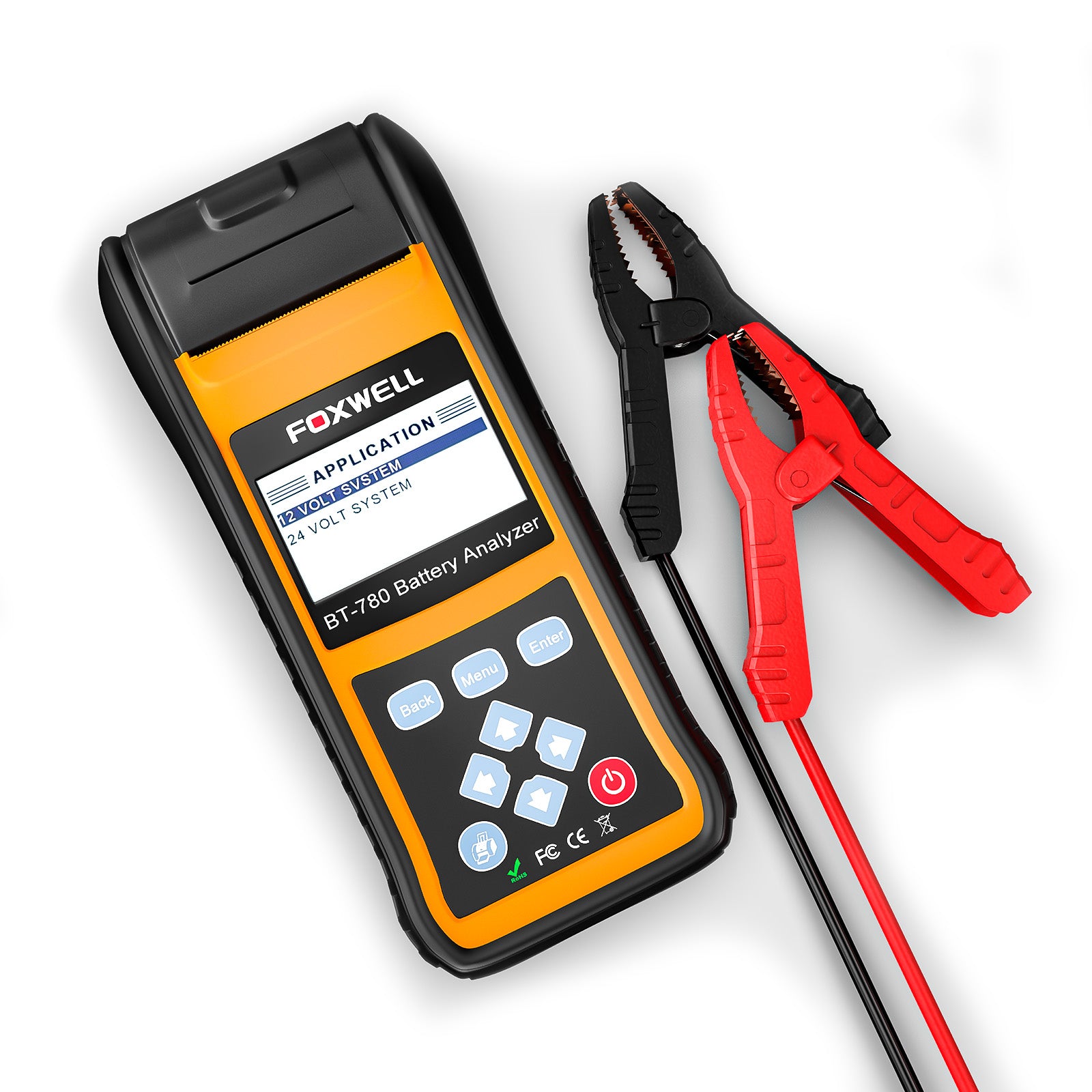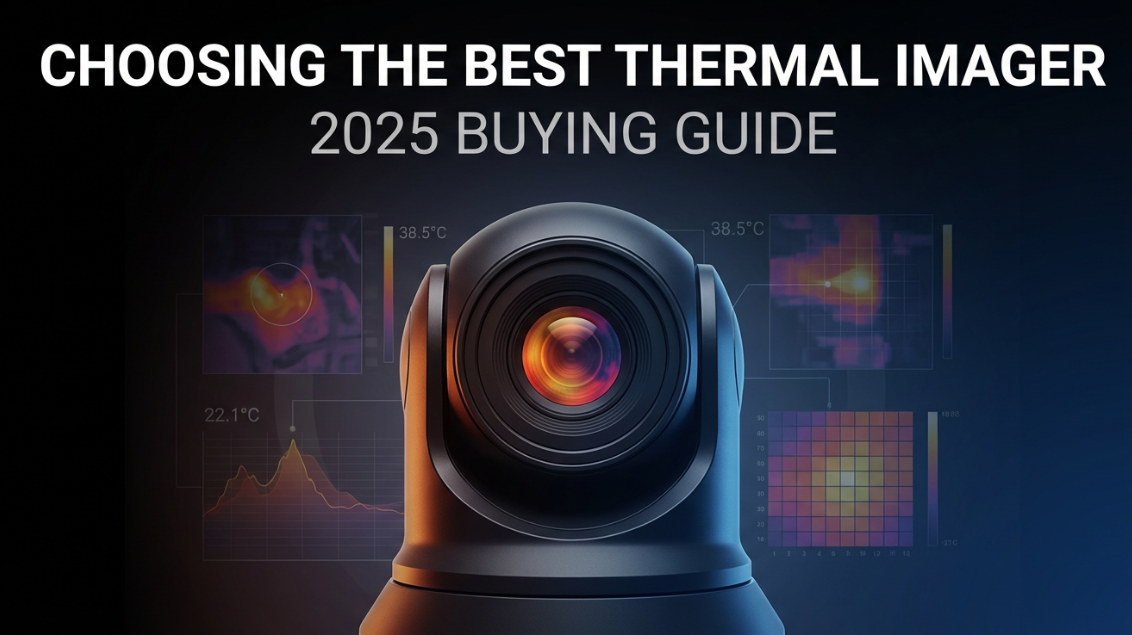Before making a choice, if you are not yet familiar with the basic principles of thermal imaging and the types of equipment, it is recommended that you first read the the Ultimate Guide to Thermal Imagers.
Thermal Imager Types Overview
Industrial Thermal Camera
As the flagship of handheld thermal imagers, Industrial Thermal Cameras are designed for high-precision, rugged industrial applications.
- Professional Performance: High thermal sensitivity (typically ≤0.05℃), wide temperature measurement range (-20℃ to 1500℃+), and high-resolution thermal sensors (320×240 pixels and above) to capture clear thermal patterns of machinery, electrical systems, and industrial components.
- Rugged Design: Dustproof, waterproof (IP65/IP67 rating), shock-resistant, and operable in extreme temperatures (-10℃ to 50℃), adapting to harsh industrial environments like factories, power plants, and construction sites.
- Practical Functions: Built-in laser pointers for precise targeting, adjustable emissivity settings for different materials, video recording/photo capture, and data analysis via dedicated software—essential for predictive maintenance, fault diagnosis, and energy efficiency audits.
- Target Users: Industrial maintenance technicians, electrical engineers, mechanical inspectors, and quality control professionals relying on reliable, high-performance tools for critical tasks.
Handheld Thermal Imager
A broader category encompassing Industrial Thermal Cameras and entry-level handheld models, tailored for both professional and hobbyist use:
- Semi-Professional Models: Balancing performance and affordability, with thermal resolution ranging from 160×120 to 240×180 pixels, suitable for HVAC inspections, home energy audits, and outdoor activities like hunting or wildlife observation.
- User-Friendly Design: Lightweight (300-500g), ergonomic grips, intuitive LCD screens, and long battery life (8-12 hours of continuous use), ideal for on-the-go operations without compromising usability.
- Key Applications: Complementing Industrial Thermal Cameras in scenarios requiring portability without industrial-grade ruggedness, such as building diagnostics, automotive repairs, and amateur thermal imaging projects.
Monocular with Thermal Imager
A specialized form factor combining portability and single-eye observation, optimized for specific use cases:
- Ergonomic & Compact: Lightweight (200-400g) and designed for single-hand operation, featuring a monocular lens for focused thermal viewing—perfect for outdoor activities, security patrols, and field inspections where mobility is critical.
- Dual-Mode Capability: Many models integrate thermal and visible light imaging, with adjustable magnification (3-10x) to enhance detection range, making them suitable for wildlife monitoring, search and rescue, and perimeter security.
- Professional Adaptability: High-end versions offer industrial-grade thermal sensitivity (≤0.1℃) and temperature measurement, serving as a portable supplement to Industrial Thermal Cameras for on-site quick checks in remote locations.
5 Key Specifications
When choosing a thermal imager, understanding the key specifications is essential to ensure accurate detection and analysis. This guide explains the most important features and their impact on performance.
1. Resolution Matters: Detector Resolution vs. Display Resolution
The resolution of the detector, rather than the display, is the core factor that determines the image clarity and the level of detail captured by the thermal imager. A high-resolution thermal imager provides sharper images, allowing users to identify small temperature variations or defects that lower-resolution units may miss.

Two thermal images illustrate the difference between high and low detector resolutions, showing how a high definition (HD) thermal imager captures finer details.
2. Thermal Sensitivity: Importance of NETD
The thermal sensitivity, often measured as NETD (Noise Equivalent Temperature Difference), indicates the smallest temperature change the imager can detect.
A lower NETD value (e.g., ≤0.05℃/50mK) means higher sensitivity, which is crucial for detecting subtle thermal differences.
A higher NETD value (e.g., ≥0.1℃/100mK) is sufficient for basic tasks (e.g., locating hot water pipes) but may miss critical, low-magnitude temperature changes in professional settings.

Two thermal images demonstrate how a high definition thermal imager with superior NETD can reveal details invisible to less sensitive models.
3. Temperature Measurement Range & Accuracy
A good thermal imager should offer a wide temperature measurement range and high accuracy.
- 1. Temperature Measurement Range
Wide Range (e.g., -20℃ to 1500℃+): Ideal for industrial applications (e.g., monitoring furnaces, molten metal, or engine components) where extreme temperatures are common. Professional industrial thermal camera models often offer switchable ranges to adapt to both low and high-temperature environments.
Narrow Range (e.g., -10℃ to 500℃): Suitable for consumer and semi-professional use (e.g., home maintenance, HVAC inspections, wildlife observation) where temperatures stay within moderate limits.
- 2. Temperature Measurement Accuracy
Typical accuracy: ±2% of reading or ±2℃ (whichever is larger) for entry-level models; ±1% of reading or ±1℃ for professional-grade imagers (e.g., high-end handheld thermal imager).
Why it matters: For commercial or industrial tasks (e.g., calibrating equipment, ensuring product quality), precise temperature data is non-negotiable. A best thermal imager for professional use will prioritize accuracy alongside range.
4. Focus Mode – Fixed, Manual, Auto Laser Focus
Focus directly impacts image clarity and measurement precision—different modes cater to varying use cases and user preferences:
| Focus Mode | Description | Pros | Cons | Typical Use / Notes |
|---|---|---|---|---|
| Fixed Focus (Fixed-Focal-Length) | Pre-set focus at a specific distance (e.g., 1m to infinity). | Compact, durable, low-cost. Ideal for entry-level imagers or targets at consistent distance. | Cannot adjust for close-up shots; limited versatility. | Large area scanning (e.g., building exteriors). |
| Manual Focus | User-controlled adjustment via focus ring or digital dial. | Precise control; suitable for close-up and long-distance targets. | Requires practice; may slow down inspections in fast-paced environments. | Industrial machinery details, distant heat sources. |
| Auto Laser Focus (Advanced Professional Feature) | Uses laser distance measurement to automatically adjust focus in milliseconds. | Fast, accurate, hands-free; efficient for dynamic tasks. | More expensive; typically in high-end best handheld thermal imager or industrial thermal camera models. | Moving between multiple targets; professional inspections. |
5. Image Fusion Features – Picture-in-Picture, Fusion, Digital Zoom
Advanced image fusion enhances usability by combining thermal and visible light data, while digital zoom extends detection range—key features for high definition thermal imager users:
| Feature | Description | Use Case / Notes |
|---|---|---|
| Picture-in-Picture (PIP) | Displays a small thermal image overlay within a full visible light image (or vice versa). | Helps locate thermal anomalies in real-world context, e.g., identifying which specific pipe in a cluttered basement is leaking heat. |
| Blend (Thermal + Visible Fusion) | Merges thermal and visible light images at adjustable ratios (e.g., 30% thermal / 70% visible). | Retains environmental context while highlighting thermal patterns—ideal for inspections where pinpointing the exact fault location (e.g., cracked heat exchanger) is critical. |
| Digital Zoom | Magnifies thermal images (typically up to 8x or 16x) to focus on details without physically moving closer. | Digital zoom does not increase detector resolution but is useful for analyzing distant targets (e.g., rooftop HVAC unit). For true high-resolution detail, prioritize a high resolution thermal imager with a quality detector. |
Thermal Imager Rental: When and How?
| Option | Advantages | Disadvantages | Ideal Use Cases |
|---|---|---|---|
| Rental | - Lower upfront cost - Temporarily meet project demands - Opportunity to test the latest models |
- Long-term cost may be higher - No permanent ownership - Usage restrictions (return deadlines) |
- Short-term or one-off projects - Testing different thermal imagers - Limited budget but need professional equipment |
| Purchase | - Long-term investment, always available - Full customization and accessories - Access to complete features and updates |
- High upfront investment - Depreciation and maintenance costs - May be uneconomical for short-term use |
- Long-term or continuous use |
Rental vs. Purchase
Top Picks: Best Thermal Cameras by Use Case
Best Industrial Thermal Camera for Diagnostics
The top picks here prioritize high resolution for fine detail and full radiometric video to capture temperature data of every pixel.
Key Requirements:
- Detector resolution >640x480 (for identifying tiny hotspots like loose wires or bearing wear)
- support for full radiometric video streaming (to record temperature fluctuations over time)
- rugged build (IP65/IP67 rating)
- compatibility with industrial data analysis software.
Recommended Models/Series:
-
Fluke Tix1060 -
Fluke RSE600 - FLIR C3-X
Best Budget Thermal Monocular for Hunting
The sweet spot for budget models lies in a balance of resolution, weather resistance, and compact design, without overpaying for industrial-grade features.
Key Requirements:
- 384x288 detector resolution (sufficient for identifying game at 100-300 meters)
- IP66/IP67 waterproof
- shockproof rating (to withstand rain, mud, and accidental drops)
- lightweight build (≤400g for single-hand use)
- quick boot time (≤3 seconds for sudden sightings).
Recommended Models/Series:
- FLIR T865
- Testo 890 Series
- Foxwell RT100
Best thermal imaging camera for wildlife Observation
Prioritizing long-range detection, high resolution, and extended battery life over quick target acquisition.
Key Requirements:
- Detector resolution ≥640x480 (to spot fine details like fur patterns or bird plumage)
- Detection range ≥500 meters (for distant animals like deer or elk)
- Battery life ≥8 hours (for all-day observation)
- Quiet operation (no loud fans or beeps to scare wildlife).
Recommended Models/Series:
- FLIR Scout TK Pro
- Leupold LTO Tracker 5 HD
- Pulsar Helion 2 XP50
Best Thermal Camera for HVAC & Building Inspection
The best tools here excel at detecting small temperature differences and making structural anomalies easy to interpret—even for less experienced users.
Key Requirements:
- Thermal sensitivity (NETD) ≤0.05℃ (to spot 0.1℃ temperature gaps in insulation)
- image fusion features (picture-in-picture or blend mode to overlay thermal data on visible light for context)
- lightweight handheld design (≤500g for overhead or tight-space use)
- built-in moisture detection presets
- Seek Thermal Reveal Pro
- Testo 865i
Best Smartphone Thermal Camera Attachment
Smartphone attachments are the most accessible thermal solution—perfect for DIYers, homeowners, or hobbyists who want thermal capability without buying a standalone device.
Key Requirements:
- Resolution (most range 80x60 to 320x240—sufficient for home use but not professional work)
- connectivity (USB-C/Lightning vs. wireless)
- battery drain (attachments draw power from the phone, so external batteries may be needed for long use).
Recommended Models/Series:
- Foxwell RT100(USB-C/Lightning)
- FLIR One Pro
Final Tip: Match Specs to Your Exact Need
The best thermal camera isn’t universal—it’s the one that fits your use case first.
- For professionals (industrial, HVAC), prioritize resolution and sensitivity;
- For hobbyists (hunting, wildlife), focus on portability and battery life;
- For DIYers, smartphone attachments offer unbeatable value. Always test (or rent) a model if possible to ensure it handles your specific tasks comfortably.
FAQs:
1. Is Renting a Thermal Imager a Good Choice?
Yes, renting a thermal imager can be a smart option depending on your needs. Thermal imager rental is ideal if you:
- Only require the device for a short-term project (e.g., a single building inspection or event).
- Want to try out different models before committing to a purchase.
- Need access to high-end industrial thermal cameras without the upfront cost.
Renting provides flexibility and allows you to use professional-grade equipment for specific tasks without long-term investment. However, if you require frequent or ongoing use, purchasing a high-resolution thermal imager may be more cost-effective in the long run.






Leave a comment
This site is protected by hCaptcha and the hCaptcha Privacy Policy and Terms of Service apply.